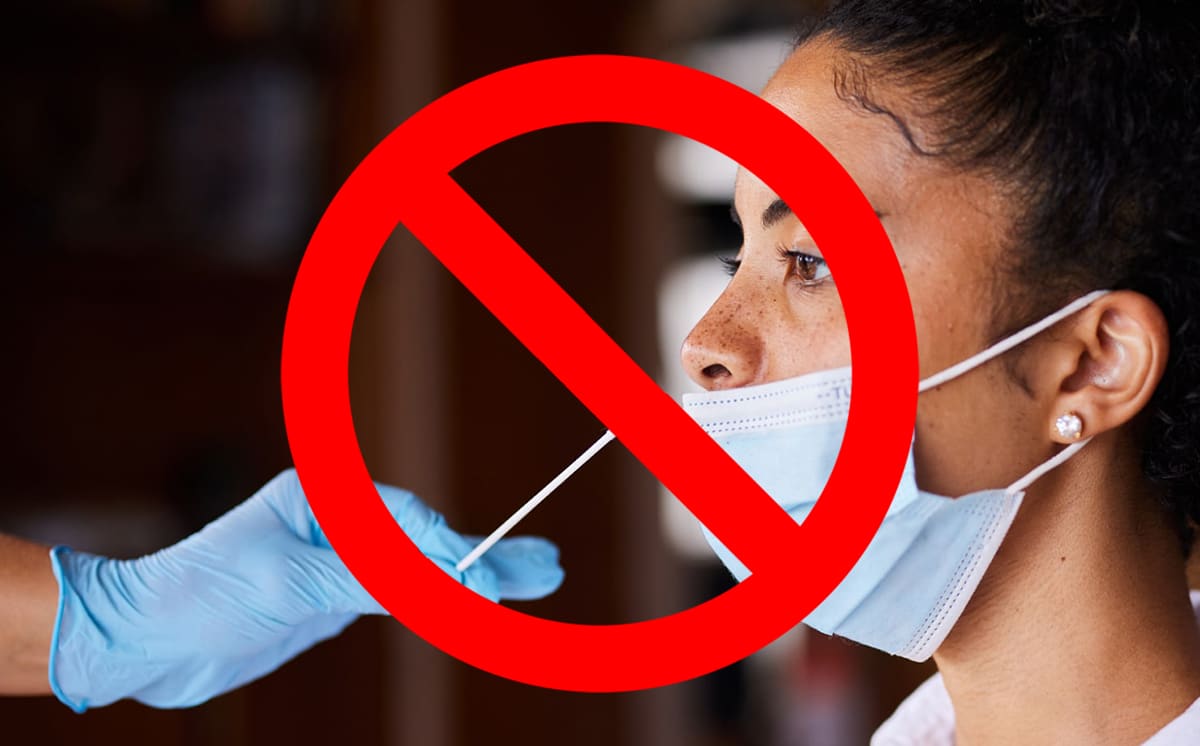

Mackenzie Bergin’s flip phone is quite a contrast to smartphones used by friends Darren Kaplan (left) and Robin O’Hara.Annie Wermiel, New York Post
The Luddite Kids saying NO to Smartphones
by Karen Hunt aka KH Mezek | May 16, 2023
I write a lot about boxes and breaking out of them. That’s why my Substack is called Break Free!
If you want a big smile on your face, have a look at the short video below of Dylan Reeves who refuses to live in the box along with all the other kids. This amazingly courageous and quick-witted 7th grader, took control of his school bus after the driver passed out, saving 60 lives.
Why was Dylan able to do this? He was the ONLY kid not distracted by a smartphone—because, incredibly, he doesn’t have one! Even after Dylan stops the bus and yells at the other kids for someone to call 911, they are so zombified they still don’t get what’s going on.
Generation Z, those people born between 1997 to 2012, are the first generation to have never known a life without smartphones and social media. They inherited a world of unprecedented chaos. Historical events like wars, recessions, and social movements have defined past generations. A pandemic is no different. Forced into isolation at home for months on end, they missed out on major youth milestones, like graduations, football games and school dances. Isn’t it lucky that smartphones were there to comfort them? Instead of socializing in the real world, they ended up averaging 7.7 hours a day on their screens.
But it wasn’t always like that. A 2018 The Guardian article introduced us to the teens who refused to use social media:
While many of us have been engrossed in the Instagram lives of our co-workers and peers, a backlash among young people has been quietly boiling. One 2017 survey of British schoolchildren found that 63% would be happy if social media had never been invented.
This is part of a wider trend. According to a study by US marketing firm Hill Holliday of Generation Z, half of those surveyed stated they had quit or were considering quitting at least one social media platform. When it comes to Gen Z’s relationship to social media, “significant cracks are beginning to show”, says the firm’s Lesley Bielby.
What happened? Oh, yeah, Covid happened. All that resolve to be in the real world disappeared as kids got sucked into a fake one.
It seemed so inspiring. Everyone might have been sitting at home in isolation (manipulated to be there when they should have been outside in the fresh air, I might add) but they could all be one inside their devices. Isn’t that beautiful? Everyone in the entire world with the same hive mind.
One World: Together At Home was a “globally televised and streamed special in support of the fight against the COVID-19 pandemic”.

Lady Gaga performing for “One World”
It was state propaganda, no different from what I would see on TV when I lived in communist Yugoslavia in the 80s. Only this was global. People all over the world being brainwashed into complete compliance.
At the same time online gaming skyrocketed as the new place to meet people and make meaningful connections. A BBC article talked about how “with the rise of social media, gamers – particularly in Gen Z – have perfected the art of building communities in and around video games. Gamers don’t just compete with strangers on the internet, but forge genuine, enduring friendships.”
That’s all great, but Covid was a strategy to manipulate everyone, especially young people, to feel more comfortable connecting in fake worlds rather than the real one. And that’s not healthy, either mentally or physically—shouldn’t that be obvious? Mega corporations were the ones who benefited. Gaming boomed during the pandemic, and the global gaming industry is expected to be worth $321 billion by 2026.
Once kids were allowed out of lockdowns, is it any wonder their devices came along too. You will seldom see a teenager—or anyone for that matter—without a phone in his or her hand.
Not too long ago, I observed a girl around ten-years of age, completely lose her marbles in a restaurant when her I-pad dropped on the floor (actually, not the first time I’ve seen this happen). She kept screaming, her face contorted with agony and rage, No, no. You’d have thought someone had just been decapitated in front of her, but it was only that the screen had cracked. Then she turned on her mortified parents, demanding to know why they hadn’t bought a case for it. She’d told them to buy a case—a million times! Her parents tried to calm her down, to no effect. Eventually, they were able to get her out of the restaurant, their dinners left untouched.
Like me, everyone in the restaurant was mesmerized by the drama. But once the girl and her parents were gone, most of the people returned to what they had been doing before. And guess what that was? Staring at their smartphones.
It’s hard for a kid to feel comfortable in the real world, even when everything is going well. Kids want desperately to fit in. Adolescence is an agonizing time. Returning to school, a place that already had enough problems before Covid, wasn’t easy.
I read an article this morning that said Students are increasingly refusing to go to school. It’s becoming a mental health crisis.

The article starts with the story of Jane Demsky finding the police have come to her house to take away her teenage son.
He never stole, used illegal substances, or physically hurt anyone. He just didn’t go to school.
It started in the middle of 6th grade when he began staying home from school on days his anxiety was too difficult to manage. Those days became more frequent, turning into weeks and months, until he stopped going altogether. Now an officer was at her house, waiting to take her son to school.
Demsky sought help from educators, doctors and counselors, trying to understand what was stopping her son from going to school for nearly a year. Finally, a psychiatrist told Demsky about a condition that affects a growing number of students with severe anxiety: school avoidance.
Demsky describes her son’s diagnosis as a “revelation”. At last, she knew what was “wrong” with him, thanks to the experts. It never occurred to her that it could be the system’s fault that her son didn’t want to go to school. That’s because most people believe what the experts say is gospel truth. And if the parent(s) don’t go along with the diagnosis, the system will shift the blame from the child to the parents.
I’m not a big fan of the current educational set-up. Thousands of hormone-crazed kids locked up together for 8 hours a day, with angry teachers who seem to hate them.
I was pretty shy as a teenager. Some days it took all my courage just to walk into the cafeteria, knowing everyone would be staring at me since, at sixteen, I was 6 feet tall and skinny as a stick. If I could have had an operation chopping off a few inches in my height I might have done it—especially if I had “experts” telling me constantly that if I did, it would make me happy. I was regularly miserable and resented my strict parents who didn’t let me dress how I wanted. Now, I would be diagnosed with a mental health problem. Back then, it was just how kids behaved and it was expected they would grow out of it, not get labeled so they would never get over it.
Forcing kids to isolate and wear masks in public trained them to hide behind false identities. Kids started communicating online instead of in person. Now, children as young as 3 years old love going on smart phones. They interact with Alexa and speak to “her” as if it’s a person in their home that they can order around. “Alexa,” says almost every 5-year-old that I know, “Play the jumping song,” or whatever. A 5-year-old will videochat, adeptly clicking the right places to put fun filters on their faces, making them look like anything but themselves—a lion, a clown, a vampire, anything. They can also put on backgrounds that look like outer space or a castle, again, anything. It seems innocent enough. But it’s like starting someone on their first cigarette, or their first drug. It only escalates. Once they are teenagers, they will never show you their real selves if they can help it.
According to Teen Vogue:
Platforms like Instagram, Snapchat, and TikTok inundate us with the carefully curated lives of others, making us covet not only their lives, but their appearances. With social media filters that alter and beautify features, young people are being introduced to unrealistic beauty standards that hurt the way they view themselves.
According to a 2021 survey of 200 teens ages 13 to 21 from ParentsTogether, young people who use beauty filters weekly are more likely to want to have cosmetic surgery and to alter their skin color. Perhaps unsurprisingly, the survey found that the more time teens spent on social media, the more likely they were to report being dissatisfied with how they look.
Funny how they draw the obvious conclusion that filters lead youth to want cosmetic surgery and to alter their skin color, but they refuse to acknowledge the obvious connection to body dysphoria and the push to transition children at younger and younger ages.
Since kids are having such a hard time in school, Teachers in Denmark are using apps to audit their students’ moods. Experts say it helps the kids feel better.
In a Copenhagen suburb, a fifth-grade classroom is having its weekly cake-eating session, a common tradition in Danish public schools. While the children are eating chocolate cake, the teacher pulls up an infographic on a whiteboard: a bar chart generated by a digital platform that collects data on how they’ve been feeling. Organized to display the classroom’s weekly “mood landscape,” the data shows that the class averaged a mood of 4.4 out of 5, and the children rated their family life highly. “That’s great!” the teacher exclaims, raising two thumbs up in the air.
Can you imagine being one of those kids under a microscope like that, your emotions part of “data-driven well-being audits”? But, hey, experts say it helps the kids feel better. Except, here’s what it says next:
Danish schoolchildren are in the midst of a mental-health crisis that one of the country’s biggest political parties has called a challenge “equal to inflation, the environmental crisis, and national security.” No one knows why, but in just a few decades, the number of Danish children and youth with depression has more than sextupled. One-quarter of ninth graders report that they have attempted self-harm. (The problem isn’t exclusive to Denmark: depressive episodes among US teens increased by some 60% between 2007 and 2017, and teen suicide rates have also leaped by around 60% over the same period.)
They’re in a mental health crisis because they’re living inside technology and being manipulated by it. But all the experts in the world will never figure that out. They make too much money off of mentally and physically ill children. Healthy children will not pay for their expensive houses and cars.
The world became a darker place when adults started analyzing children to see how they could profit off of them. It was a dark day when the marketing industry realized they could target ads directly to children. Children now spend almost $200 billion annually, and companies spend more than $17 billion each year marketing to them.
Children are just another way to make money for corporations.
A majority of U.S. children have television access in their bedrooms, and many children also have unsupervised computer time, the American Psychological Association (APA) reports. Much of the marketing content they view is in a context where parents are not present. These two central trends — growth in overall advertising and children’s increased media access — have led to a noticeable rise in marketing directly to children.
Mostly, children are influenced to buy things, to alter their appearance, to follow the latest trend, by social media influencers. 86% of young Americans say they want to become a social media influencer. To them, influencers have replaced singers, actors, authors, artists. Kids will watch their favorite influencer pet a cat or ride a bicycle for hours instead of doing it themselves.
“Roughly 98% of consumers said they made, or plan to make, a purchase on social media in 2022. The group most likely to buy? Parents with young kids. About 81% of adults with children under 18 said they were interested in social commerce, lending the perfect opportunity for brands to market to the whole family. Bonus points if you can find a creator who parents and kids both enjoy watching.”
Below is a really interesting conversation between kids who are pro and anti-social media. One girl describes how she found that she and her friends were no longer connecting when they got together. All they were doing was making sure to get that “perfect” photo to post on Instagram.
Dylan Reeves told his parents he knew how to drive the bus because he “watched the driver do it every day”. While the other kids sat on the bus, staring mindlessly at screens, Dylan was looking out the window, watching the driver, thinking thoughts his own brain made up, not thoughts put inside his head by voices inside of a phone.
Thankfully, Dylan isn’t alone, although it can certainly seem that way. Check out these young luddites who belong to the Anti-Social Network in New York.
To the members of the Antisocial Network, being a Luddite means being more present in your life, in your community and in your actions, and who you are.
“For me, technology makes it a lot easier to be disconnected from reality. You’re numbing your brain, you’re not really processing anything, you’re just entertaining yourself,” says one member.
A girl name Lane describes the challenge of saying “no” to technology and how the first couple of days she felt the chemistry in her brain changing and how bored she felt. She talked about how being bored is something you don’t feel when you are on social media.
“It keeps you busy, so you don’t have quiet time to reflect on anything that your own brain might create for you to think about. Everything is created for you from an outside source.”
Working through the boredom, Luddites find ways to occupy themselves, like journaling, running, reading books, building things with their hands, making art.
Eden’s smartphone broke in January 2020. While most young people in his situation would have swiftly ordered a replacement with guaranteed next-day delivery, 22-year-old Eden was in no rush to get a new phone. “I had been getting fed up with how much time I’d been wasting on it so when it broke, I didn’t get a new phone for about a month. In this time, I noticed a massive improvement in my mood and freedom to think.”
Eden says that it’s sometimes a struggle to be out and about without maps but adds that at least his sense of direction has improved drastically. (There is a whole body of evidence to suggest that humans can lose their natural navigation skills if they aren’t used enough).
We are losing so much of ourselves to these devices, I don’t think we are even aware of how badly it is affecting us.
48 percent of Gen Zs say social media makes them feel “sad, anxious, or depressed.” During the pandemic, many found themselves “compulsively watching the world descend into crisis – also known as ‘doomscrolling’.”
Oh, I think we can all relate to that bad habit. How can we help but doomscroll when almost everything in the news is a disaster?
A young woman named Jade, 23, recently made the switch to a brick phone. “It was a ‘fuck it’ moment,” she explains. “I’d thought about making the change for years, and – embarrassingly – one night I was reading 2000s manga at 1 am, saw all the characters using flip phones, and decided to just get one. I could work out the logistics later.”

Okay, it’s true that 95 per cent of Gen Z currently own a smartphone, but we can only hope more and more young people will get sick of it and move towards spending less time ‘online.’ Writing for Wired in 2021, journalist Hussein Kesvani predicted that in years to come, “we will see more people leave public platforms entirely, sticking instead to small communities and friendship groups on more private platforms”.
I sure hope so!
An article in Insider tells the story of how Lola Schub, a “self-described ‘screenager,’ snapping selfies and mindlessly scrolling through social media, gave up her smartphone.
When a friend ditched her smartphone for good, it inspired Shub to swap her iPhone for a flip phone. Shub is now part of the Luddite Club, a group of New York City teens who meet at their local library. The club has only one rule: no smartphones here.
Since giving up her smartphone, Shub says she has more space to think creatively, more time to read, and better concentration. She and many of her friends have given up Instagram and they prefer phone calls over texting.
“If I have one overarching message for my fellow teenagers, it’s this: Spend time getting to know yourself and exploring the world around you,” Shub writes. “It’s so much more fulfilling — and so much more real — than the one inside your expensive little box.”
We end where we started—get out of the box. Get your kids out of the box.





